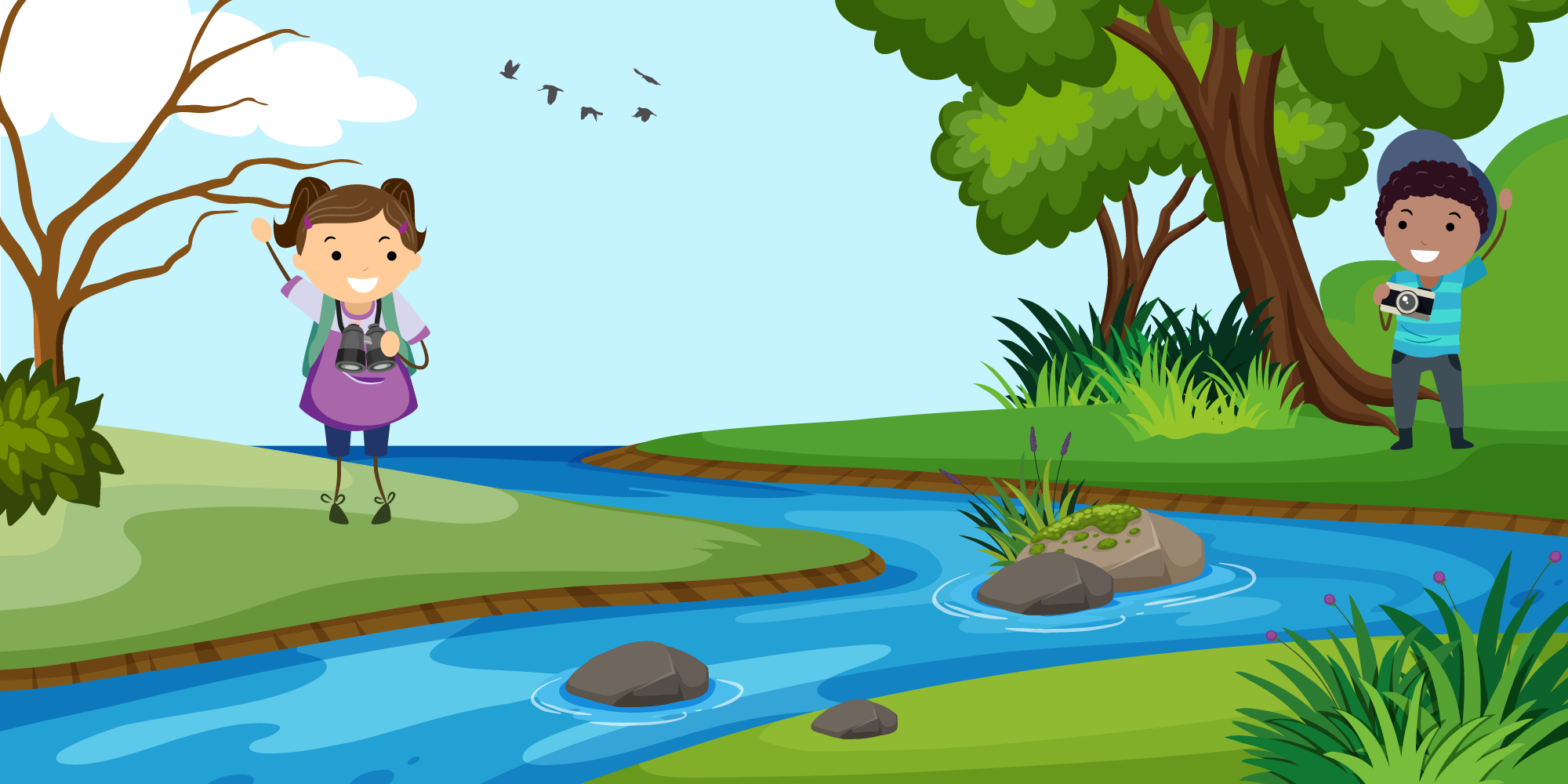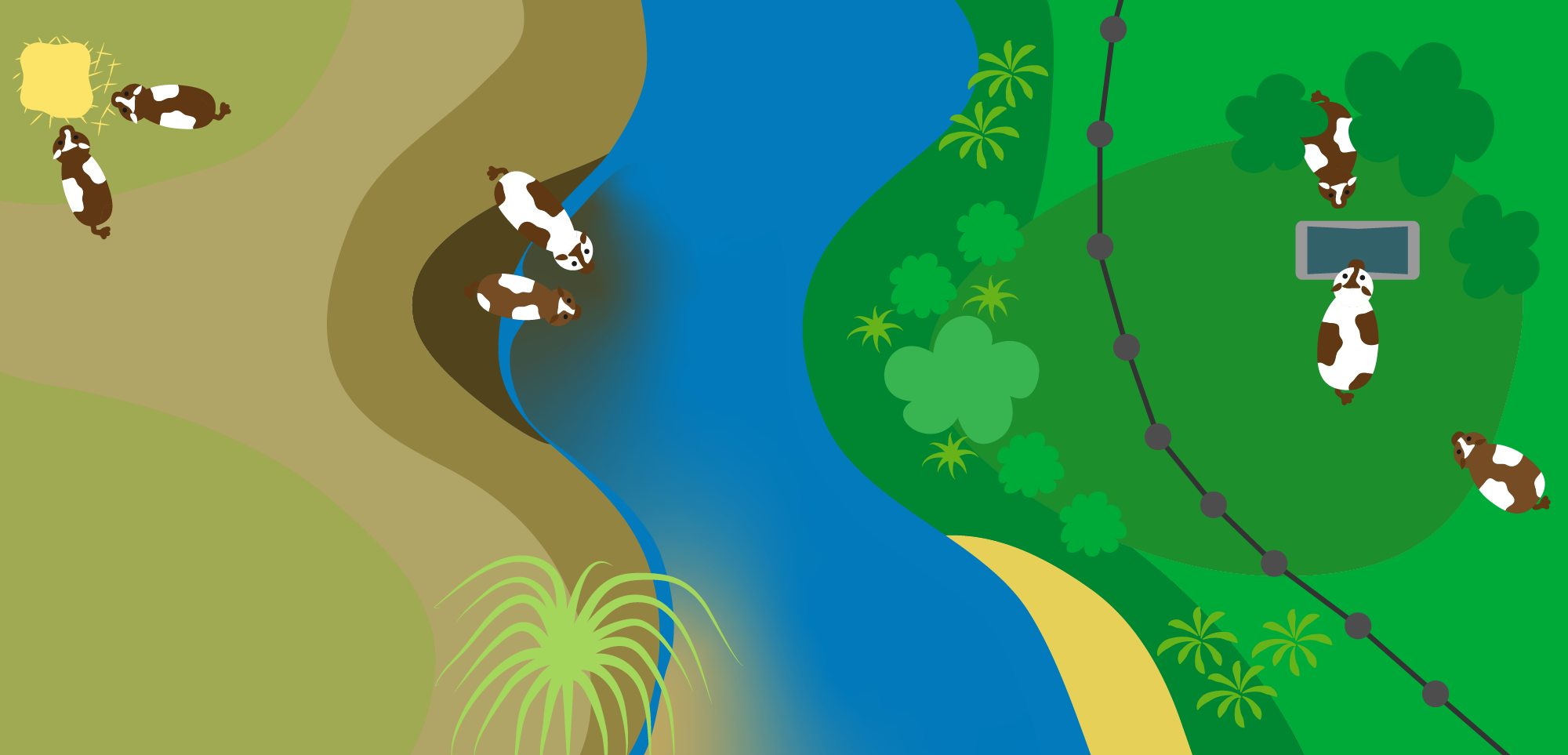
The riparian and aquatic zones are important because they protect the
health of our waterways. Changes in one zone will impact on the other.
What is the riparian zone?
The riparian zone extends along the banks of a river, creek or wetland. This area is next to, and influenced by, the water body. It includes aquatic and semi-aquatic plants, as well as tree and shrub vegetation. The riparian zone habitat is an important link between the aquatic environment and the adjoining land. It provides food and shelter for aquatic, semi-aquatic and land animals such as lizards, snakes, bats, frogs and birds. When riparian vegetation is lost, many animals can no longer survive due to loss of habitat. Riparian vegetation is also important to protect the waterway from erosion and prevent pollutants entering the stream. A lack of plants along the banks, like in the photo below, may cause poor water quality by increasing turbidity, which affects aquatic life.

My Local Waterway
Which side of the river would you prefer to live on?
In this activity you are going to use what you have learned about riparian zones to label a diagram and create a list of things that make a good and poor riparian zone. With permission from your parents/guardians, you will get the opportunity to take photos of riparian zones at your local waterways, rate them as good, fair or poor and identify why you have given them this rating.
Step 1
Label the area on the Activity Sheet diagram that you think is the ‘aquatic zone’ for this waterway.
Step 2
Label the two areas on the Activity Sheet diagram that you think make up the ‘riparian zone’ for this waterway.
Step 3
One side of the diagram shows a healthy or good riparian zone and one side shows an unhealthy or poor riparian zone. In the table, list the things you can identify that make the good riparian zone healthy and the poor riparian zone unhealthy.
Step 4
Visit some spots on your local waterways with your parents/guardians. Take photos of the riparian zones (everywhere that has a river, creek, lake or other waterway has a riparian zone at its edge). Print your photos and identify whether you would rate them as good, fair or poor riparian zones. Write a list of the things you can see in each photo that you think makes them good, fair or poor. Add this sheet and your photos to your Backyard Puzzle Box.
DID YOU KNOW?
Many weeds, such as willows, blackberry, lantana and alligator weed, have been introduced to Australia. Few insects or birds live under or in weed species. Weeds can also pollute the waterways — willow leaves can clog waterways and camphor laurel leaves can be toxic to native fish.
Send us a photo of your local riparian zone
With parent/guardian permission, submit a photo of your local riparian zone and it could be displayed on the website and the Hunter Local Land Services Facebook page.
Additional activities
Spot the differences
There are many signs that tell us if riparian habitat is healthy or unhealthy. Can you spot the differences in this activity sheet?
DOWNLOAD ACTIVITY SHEETRiparian Zone Guided Meditation
Combining a ‘sense of place’ and mindfulness, students participate in a guided meditation based around a riparian zone. This activity will help students appreciate the importance of this special area for biodiversity and water quality. The meditation is followed by a lesson on the importance of riparian zones for water quality and biodiversity.
The guided meditation is suitable for all ages. The reflection discussion is suitable for Stages 3–4.
